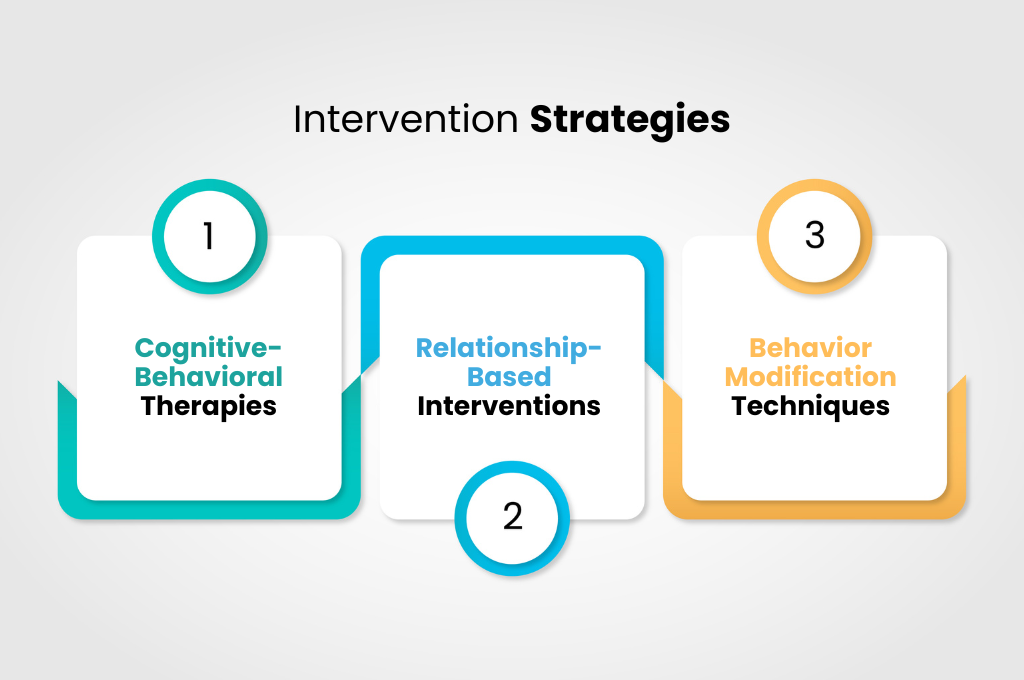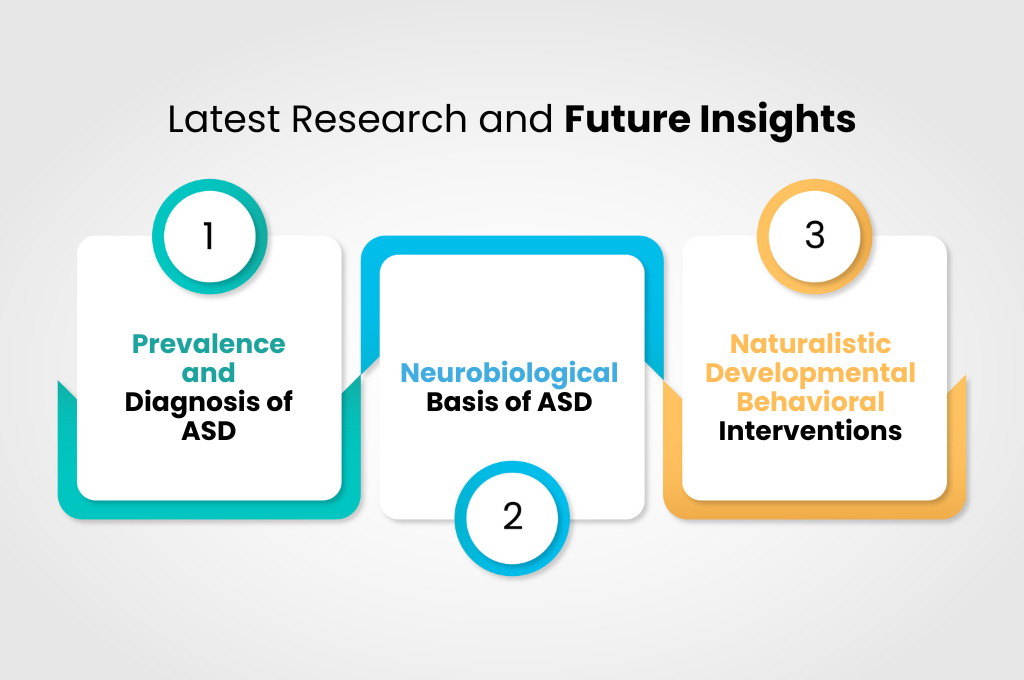Revolutionizing Autism Treatment: Neuroscience & Behavioral Health Merge
ABA TherapyJuly 17, 2025

Understanding ABA Therapy
Applied Behavior Analysis (ABA) is a go-to method that helps people with autism spectrum disorder (ASD) tackle everyday challenges by reinforcing socially significant behaviors. This approach boosts skills like reading, handling schoolwork, socializing, communicating, and managing daily tasks (Hidden Gems ABA).
Basics of ABA Therapy
ABA therapy is all about using behaviorism to steer behaviors in a helpful direction. Therapists break down complex activities into chewable bits, making it easier to teach new skills and improve current ones. Tracking progress with a keen eye, they craft interventions that fit each person's unique pace and needs.
A big part of ABA therapy involves reinforcement, which is just a fancy way of saying good behaviors get rewarded so they happen more. By spotlighting positive reinforcement, folks with ASD learn and embrace new habits while ditching not-so-great ones. Consistency, patience, and personalization are the names of the game to make sure therapy gains stick and grow.
Importance of Early Intervention
Jumping in early with behavioral interventions can make a world of difference, especially if it starts in the toddler years and sticks around for a couple of years (NCBI). These early steps may lead to better thinking skills, adaptability, and language—core areas where early treatment can really flip the script.
Starting young taps into the brain's early-stage flexibility, making it more tuned to social cues and possibly softening the impact of ASD symptoms (NCBI). This underlines how a little head start on ABA therapy can go a long way.
When caregivers, teachers, and therapists join forces to press on early ABA intervention, they're giving kids with ASD a fighting chance at gaining vital skills and boosting quality of life. Taking action early opens doors for real progress, making the journey easier and the future brighter.
Intervention Strategies

When dealing with ABA Therapy for folks on the autism spectrum, you've got several tricks up your sleeve to meet their unique needs and help boost their social vibes. Three main game plans often rolled out are cognitive-behavioral therapies, building relationships, and tweaking behaviors.
Cognitive-Behavioral Therapies
Cognitive-behavioral therapies are super useful for autism. They tackle how people think and act, which shines a light on better ways to handle stress and get on with life. By zooming in on the thought-emotion-action cycle, these therapies aim to tune up emotional responses and social chats.
Therapists might gather folks in a group or one-on-one to tackle stuff like anxiety, anger, or social awkwardness. With personalized plans, individuals on the spectrum can start spotting and tweaking their actions, upping their everyday skills, and feeling better overall.
Relationship-Based Interventions
Relationship-based interventions are all about making friends and building connections. Take Parent-Child Interaction Therapy, or PCIT, where the focus is on tightening the bond between parents and kids while learning to tackle behaviors effectively. By teaching caregivers to help their kids, this method aims to boost friendly behaviors and cut down on tantrums or meltdowns.
These strategies set up a nurturing environment for individuals on the spectrum to grow their social, communication, and emotional skills. Strengthening these relationships pays off in big ways, improving the overall happiness and social circles of those with autism.
Behavior Modification Techniques
Behavior tweaking is a biggie in ABA therapy, purpose-focused on sprucing up certain behaviors and chatting skills. With organized plans, these techniques look to encourage good actions and tone down the tricky stuff often seen in autism.
By nudging through reinforcement and guidance, these methods arm individuals with autism to pick up new tricks and adjust their behaviors wherever they are. This leads to learning new skills, cutting out tough behaviors, and amping up their social game.
Throwing cognitive-behavioral therapies, relationship-building, and behavior tweaking into the mix gives those on the autism spectrum a full-on support package tailored just for them. These strategies mesh together to ramp up social skills, emotional control, and adaptability, setting the stage for growth and empowering individuals with autism to shine.
Focus on Social Skills Training
Social skills training is a big deal for folks with autism. It helps them make sense of social interactions and build real connections. You know, stuff most of us take for granted. There are all kinds of things out there to beef up these skills. So, let's talk about three main ones: Trauma-Focused Cognitive-Behavioral Therapy, Parent-Child Interaction Therapy, and Applied Behavior Analysis (ABA).
Trauma-Focused Cognitive-Behavioral Therapy
Alright, let's break this down. TF-CBT, or Trauma-Focused Cognitive-Behavioral Therapy, is all about taking on the emotional toll that tough experiences can leave behind. Initially, it was more for trauma-related stuff, but it turns out, it’s super handy for kids with autism too (Hidden Gems ABA). This therapy helps them pick up on cues, react better, and keep their emotions in check. It's like a social skills toolbox, giving them ways to handle whatever life throws their way.
Parent-Child Interaction Therapy
Now, imagine this: PCIT, or Parent-Child Interaction Therapy, strengthens bonds between parents and their kiddos through structured fun and positive vibes. For autism treatment, it’s about tuning up the communication part, ensuring interactions are full of giggles and growth. It hands over the reins to parents, giving them tricks and tools to smooth the bumpy road of social development, boosting their kid’s confidence to take on the world.
Applied Behavior Analysis (ABA)
Then there's good ol’ ABA - Applied Behavior Analysis, for the uninitiated. This tried-and-tested method is a favorite in the autism community. It’s like the Swiss Army knife of autism treatments - sharp and versatile. By using step-by-step teaching, role-playing, and a lot of high-fives (or whatever floats their boat), ABA focuses right on those areas that need a helping hand (Hidden Gems ABA). It breaks down social hang-ups into smaller pieces, making them easier to tackle.
Mixing these strategies offers a well-rounded game plan. By hitting the social challenges from a bunch of different sides and using each one’s strong points, parents, therapists, and teachers can craft a nurturing space where social skills can bloom, setting the stage for meaningful relationships for those with autism.
Latest Research and Future Insights

Autism research is racing ahead, with big strides being made in understanding the hows and whys of Autism Spectrum Disorder (ASD). This is crucial for helping kids catch a break early on with better diagnosis and treatment. Digging into the brain side of things gives us clues about what makes ASD tick, and diving into naturalistic developmental behavioral interventions (NDBIs) shows hopeful paths for more effective therapies.
Prevalence and Diagnosis of ASD
According to the CDC, autism affects about 1 in 44 kids in the U.S. — yup, that's over 2%. Worldwide, it's just shy of 1%, mostly because richer countries have better rates of identification, with about 52 million people on the autism spectrum — or 1 in every 132 folks out there (Source). But nailing down ASD in tiny tots is still kinda tricky, which is why we need to keep punching away at early diagnosis and getting kids the help they need pronto.
Neurobiological Basis of ASD
Scientists are deep-diving into the brains of those with ASD to figure out what's going on in there. Animal models that mimic the social hiccups and repetitive behaviors found in autism are big helpers in this research adventure. Tests like the 3-chambered test and ultrasonic vocalization test dish out vital info on the brain machinations of ASD, inching us closer to pinpointing therapies that hit the mark.
Naturalistic Developmental Behavioral Interventions
Guess what's hot in autism treatment? NDBIs! These methods are awesome because they happen in everyday environments with a give-and-take vibe between the therapist and the kiddo. They use real-world consequences and behavioral tricks to teach skills that make sense for the child's age and stage. Born from lots of nerdy number crunching in behavioral and developmental sciences, NDBIs pay special attention to the unique needs of little ones with ASD, using play and social interaction as teaching moments.
Several standout NDBIs have come together from different research labs, like Incidental Teaching, pivotal response training (PRT), the Early Start Denver Model (ESDM), and enhanced milieu teaching (EMT). Every intervention takes care to follow a laid-out plan, ensure quality execution, focus on personalized goals, keep an eye on progress, and adapt strategies to tackle the particular hurdles for each child with ASD (NCBI). This tailored, evidence-backed plan spells promise for boosting outcomes and making life better for those with autism spectrum disorder.
Get More Insights On: Breaking Down Barriers: Exploring Generalization in ABA
